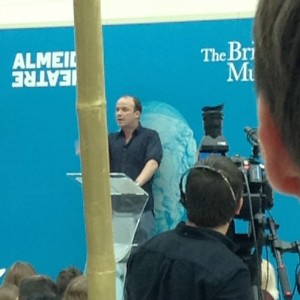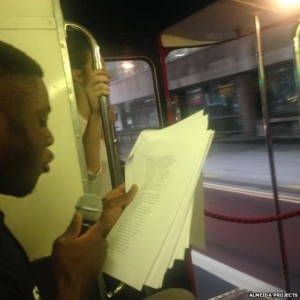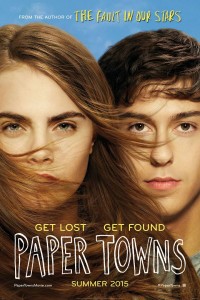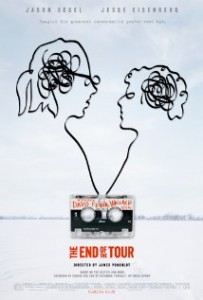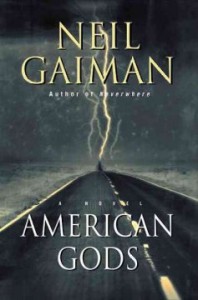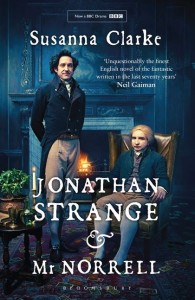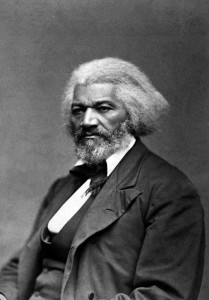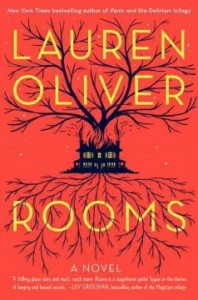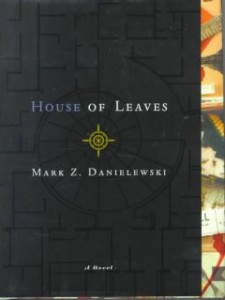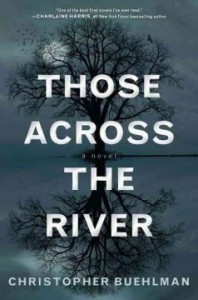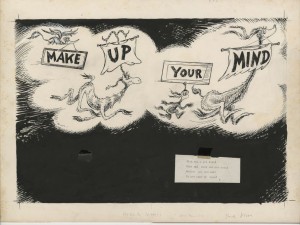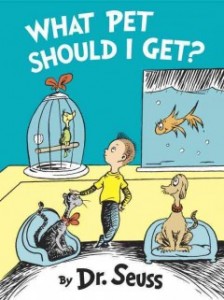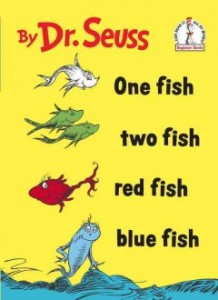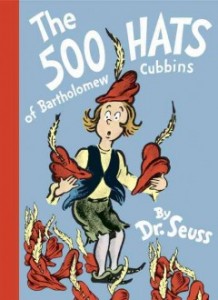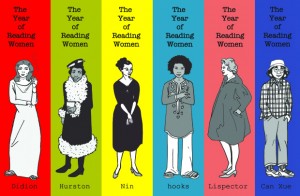 This week, I read an article in which an author described how, after submitting a novel to agents and publishers and receiving discouraging responses from the few who responded to her at all, she decided to submit her novel to the same group of people posing as a male author. She received several responses right away (this was on a weekend, mind you) from people who wanted to set up a meeting immediately and discuss her manuscript. Sadly, I should have been more surprised than I was when I read this. While this is just one woman’s experience, I fear that it still displays a bias that is prevalent in literature today. Men still dominate the publishing world, despite strides that have been made by women over the last 60 years or so.
This week, I read an article in which an author described how, after submitting a novel to agents and publishers and receiving discouraging responses from the few who responded to her at all, she decided to submit her novel to the same group of people posing as a male author. She received several responses right away (this was on a weekend, mind you) from people who wanted to set up a meeting immediately and discuss her manuscript. Sadly, I should have been more surprised than I was when I read this. While this is just one woman’s experience, I fear that it still displays a bias that is prevalent in literature today. Men still dominate the publishing world, despite strides that have been made by women over the last 60 years or so.
Clearly this is not a new struggle. The Bronte sisters are among a host of pre-20th Century authors who published under male 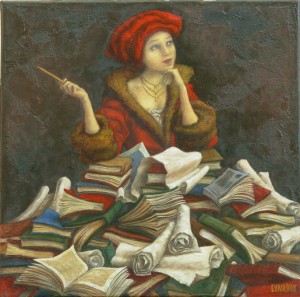 pseudonyms hoping that it would open doors for them. It’s easy to think that this issue is an outdated problem associated with the misogyny of a less-illuminated, pre-women’s movement time. However, male or androgynous pen names are still being used in modern literature. For example, despite what ultimately became a smashing success that altered the landscape of children’s literature, J.K. Rowling’s publishers asked her to change her first name to something more neutral so that it would attract more “boy readers.”
pseudonyms hoping that it would open doors for them. It’s easy to think that this issue is an outdated problem associated with the misogyny of a less-illuminated, pre-women’s movement time. However, male or androgynous pen names are still being used in modern literature. For example, despite what ultimately became a smashing success that altered the landscape of children’s literature, J.K. Rowling’s publishers asked her to change her first name to something more neutral so that it would attract more “boy readers.”
The problem extends beyond the perception of women writers, though. Sources are beginning to notice that men are published more often than women and are reviewed (which to many means, taken more seriously) more often than women. It is precisely this bias that incited author Kamila Shamsie to put out a call for publishers to spend a year (2018) publishing only women authors as a way to rectify the imbalance in the world of literature. So far, only one publisher has taken up the cause. What’s been called Shamsie’s “provocation” has been a way to at least call attention to the existing gaps.
This is not to say that men don’t write amazing things or that male authors don’t have any further relevance in contemporary literature. Both men and women comprise my list of favorite authors (though in light of what I’m writing here, I feel compelled to admit that there are more men than women on that list) and men are still publishing great things. As a society seeking gender equality, beginning a conversation in which inequalities are exposed can only help us achieve what we’re striving for. Nothing can change if no one discusses the problem and everyone assumes things are as they should be. We shouldn’t stop reading what men write if we enjoy it, but discovering what women have to offer can’t hurt either.
Here are some suggestions by women authors that are worth exploring:
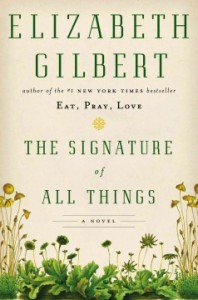 The Signature of All Things by Elizabeth Gilbert
The Signature of All Things by Elizabeth Gilbert
Known largely for Eat, Pray, Love, Gilbert is quite possibly more honest, lyrical and exciting in her fiction than her non-fiction or even her TED talks. This story follows Alma Whittaker a 19th-Century naturalist as she searches for truth and meaning and science in the study of plant life. As she gains more experience, she publishes her work and blazing a trail into the burgeoning thoughts of evolutionary theory. While she falls in love, is caretaker for her father and has overseas adventures throughout the novel it is Alma’s meticulousness in observation and her ability to forge her own path that makes this such a compelling read. Gilbert has researched and created a richly detailed, highly complex historical figure with whom the reader can truly sympathize precisely because she is so real on the page.
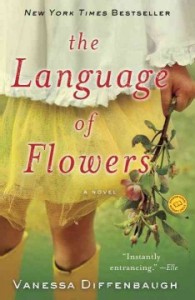 The Language of Flowers by Vanessa Diffenbaugh
The Language of Flowers by Vanessa Diffenbaugh
This is a book that could easily get dismissed as a work of the oft-vilified term “chick-lit.” In all honesty, I was fully prepared not to like it. Diffenbaugh proved me very wrong. This is a layered work, in part following the exploits of a newly-emancipated foster child, Victoria Jones as she is left to face life on her own and also exploring the troubled past that has led her to where she is now. Diffenbaugh explores the themes of love, heartache and the qualities that truly make a family with the underlying current of the language of flowers, the Victorian ideal of meaning for specific blooms. The story is heartbreaking, touching and completely engrossing.
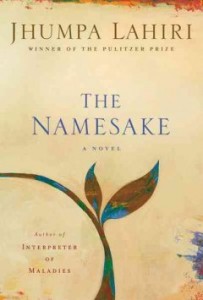 The Namesake by Jhumpa Lahiri
The Namesake by Jhumpa Lahiri
Lahiri is immensely talented in portraying the displacement of a cultural outsider and the struggle of an immigrant to fit into a new world of ideals and customs. Her Pulitzer-Prize winning Interpreter of Maladies displayed this talent in short form. In The Namesake, her first novel, she explores these themes amidst family dynamics as the Gangulis, struggle to balance their new life with their cultural Bengali traditions and settling into their new home. Their son, Gogol, struggles with his own identity, reflecting what his parents and traditions expect versus what he, himself wishes to become and on his own terms. This book is beautifully written and deeply engaging.
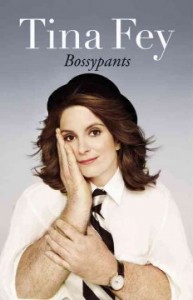 Bossypants by Tina Fey
Bossypants by Tina Fey
This isn’t a work of fiction, and I’ve mentioned it on the blog before, but amidst her reflections on her own life, Fey espouses many of the same feminist thoughts and notes similar traits in the comedy world that sparked the debate in gender inequality in publishing. the writing is smart, funny with a healthy dose of sarcasm, making her entry into the gender inequality conversation delightfully palatable.
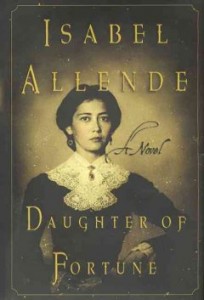 Daughter of Fortune by Isabelle Allende
Daughter of Fortune by Isabelle Allende
Part of what’s so great about the Classics book group at the Main library, is that the group is open to reconsidering what is and is not a “classic.” This was a selection last fall and while it is not technically a classic in the traditional sense of the term, many felt that it was bound to become one. Allende writes soulfully about longing and loss, coming of age and coming into one’s own and somehow manages to frame these themes in a globe-trotting historical adventure that is both riveting and heartwarming from cover to cover.
Bonus picks:
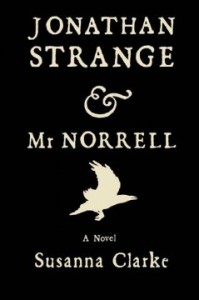 Jonathan Strange and Mr. Norrell by Susanna Clarke
Jonathan Strange and Mr. Norrell by Susanna Clarke
I know, I know. This book and its ensuing miniseries have already been discussed by both me and the Library’s own version of a Bloggess (who has been faithfully posting despite her London locale). I will not further entrench all of you into the delights of the magical alternate-England that Clarke has created. Nor will I wax on about her engaging, highly-readable prose that captures the reader upon the first syllable. Instead, I offer this book solely as evidence for the naysayers who claim that women can’t write engaging, complex, well thought-out male characters. Magic aside, Jonathan Strange and Gilbert Norrell are as realistic on the page as any flesh-and-blood man.
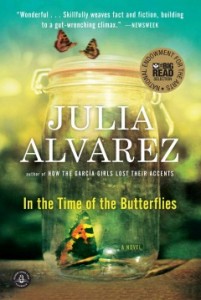 In the Time of the Butterflies by Julia Alvarez
In the Time of the Butterflies by Julia Alvarez
The Library’s community Big Read this September happens to be written by a woman and this book is a wonderful example of the transformative power of prose. Alvarez treats the story of the Mirabal sisters with sensitivity, but not kid gloves, shedding light on a dark period of Dominican history that I’m sure many would rather keep hidden (hence the book’s status as a Banned Book). Who knows, maybe she’ll have something to say about the status of women in the literary world when she Skypes with the Library on September 2nd.
That’s this week’s dispatch from the South Branch. Till we meet again next Saturday, keep on reading whatever you enjoy, but consider reading one of these or other woman authors and have your own part in the conversation.

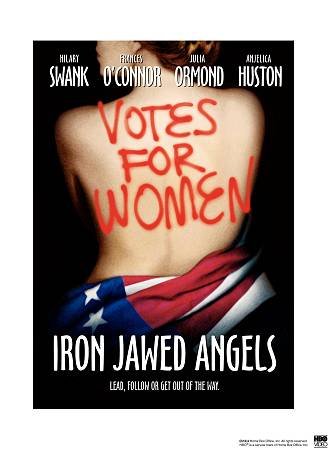 3. Check out Hollywood’s take on the final days of the fight for suffrage. Iron Jawed Angels with Hilary Swank, Frances O’Connor, Julia Ormond, Anjelica Huston and others is a well done dramatization that will stick with you well past your first viewing.
3. Check out Hollywood’s take on the final days of the fight for suffrage. Iron Jawed Angels with Hilary Swank, Frances O’Connor, Julia Ormond, Anjelica Huston and others is a well done dramatization that will stick with you well past your first viewing. Sisters: the lives of America’s suffragists by Jean H. Baker. Discover the personal lives and political struggles of the heroines of the suffrage battle: Lucy Stone, Elizabeth Cady Stanton, Susan B. Anthony, Francis Willard and Alice Paul.
Sisters: the lives of America’s suffragists by Jean H. Baker. Discover the personal lives and political struggles of the heroines of the suffrage battle: Lucy Stone, Elizabeth Cady Stanton, Susan B. Anthony, Francis Willard and Alice Paul. The Scarlet Sisters: sex, suffrage and scandal in the Gilded Age by Myra MacPherson. Victoria Woodhull, spiritualist, owner of a women’s brokerage house and the first woman to run for president in the United States, had none of the respectability that other suffragists tried so hard to cultivate. But her story makes for highly entertaining reading!
The Scarlet Sisters: sex, suffrage and scandal in the Gilded Age by Myra MacPherson. Victoria Woodhull, spiritualist, owner of a women’s brokerage house and the first woman to run for president in the United States, had none of the respectability that other suffragists tried so hard to cultivate. But her story makes for highly entertaining reading!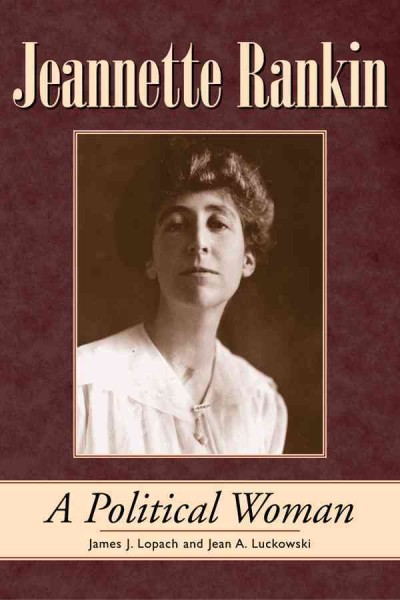 And no consideration of the women who won us the right to vote would be complete without mention of the first woman elected to Congress. Jeannette Rankin: a political woman by James J. Lopach chronicles Rankin’s election to office (years before women could vote nationally), her social activism and her staunch pacifism through both world wars.
And no consideration of the women who won us the right to vote would be complete without mention of the first woman elected to Congress. Jeannette Rankin: a political woman by James J. Lopach chronicles Rankin’s election to office (years before women could vote nationally), her social activism and her staunch pacifism through both world wars. In a Gilded Cage by Rhys Bowen. Female detective Molly Murphy finds herself solving yet another mystery after she and some fellow Vassar alums are arrested for participating in a suffrage parade.
In a Gilded Cage by Rhys Bowen. Female detective Molly Murphy finds herself solving yet another mystery after she and some fellow Vassar alums are arrested for participating in a suffrage parade.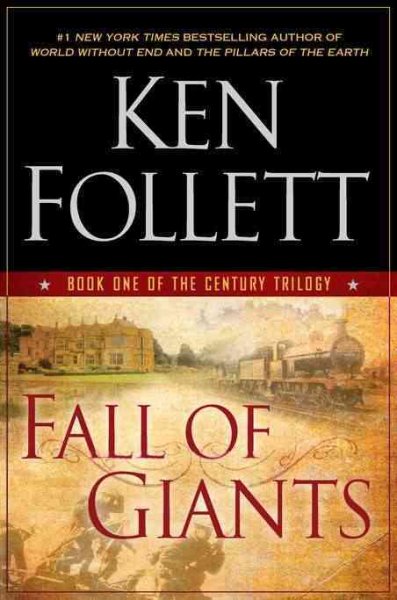 Fall of Giants by Ken Follett. If you need another reason to try Follett’s epic and much-loved Century trilogy here’s one: it is, among many other things a tale of the suffragist movement.
Fall of Giants by Ken Follett. If you need another reason to try Follett’s epic and much-loved Century trilogy here’s one: it is, among many other things a tale of the suffragist movement.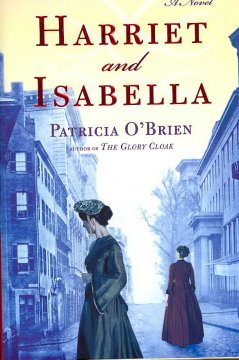 Harriet and Isabella by Patricia O’Brien. The members of the real-life Beecher family were quite well known in their time. Brother Henry Ward was a famous (eventually disgraced) preacher. Equally well known were his sisters, Harriet Beecher Stowe (author of Uncle Tom’s Cabin) and the suffragist, Isabella Beecher Hooker. This fictionalized account of their family, looks at Henry’s fall from grace and his sisters very different reactions to it.
Harriet and Isabella by Patricia O’Brien. The members of the real-life Beecher family were quite well known in their time. Brother Henry Ward was a famous (eventually disgraced) preacher. Equally well known were his sisters, Harriet Beecher Stowe (author of Uncle Tom’s Cabin) and the suffragist, Isabella Beecher Hooker. This fictionalized account of their family, looks at Henry’s fall from grace and his sisters very different reactions to it.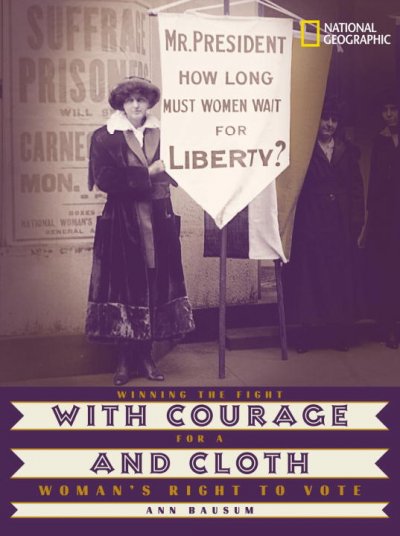 teens in your lives. The youngest in the family will appreciate Marching with Aunt Susan by Claire Rudolf Murphy, while older elementary school aged children can enjoy A Time for Courage: the suffragette diary of Kathleen Brown by Kathryn Lasky. For
teens in your lives. The youngest in the family will appreciate Marching with Aunt Susan by Claire Rudolf Murphy, while older elementary school aged children can enjoy A Time for Courage: the suffragette diary of Kathleen Brown by Kathryn Lasky. For 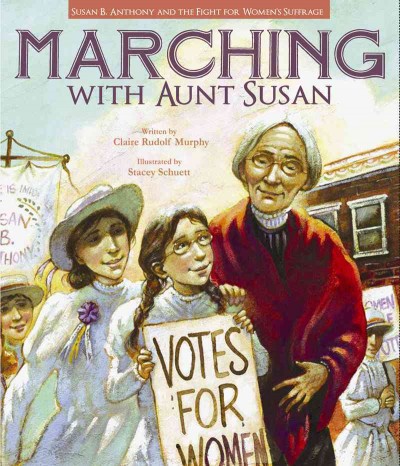 the middle or high school set, try With Courage and Cloth: winning the fight for women’s right to vote by Ann Bausum.
the middle or high school set, try With Courage and Cloth: winning the fight for women’s right to vote by Ann Bausum.

